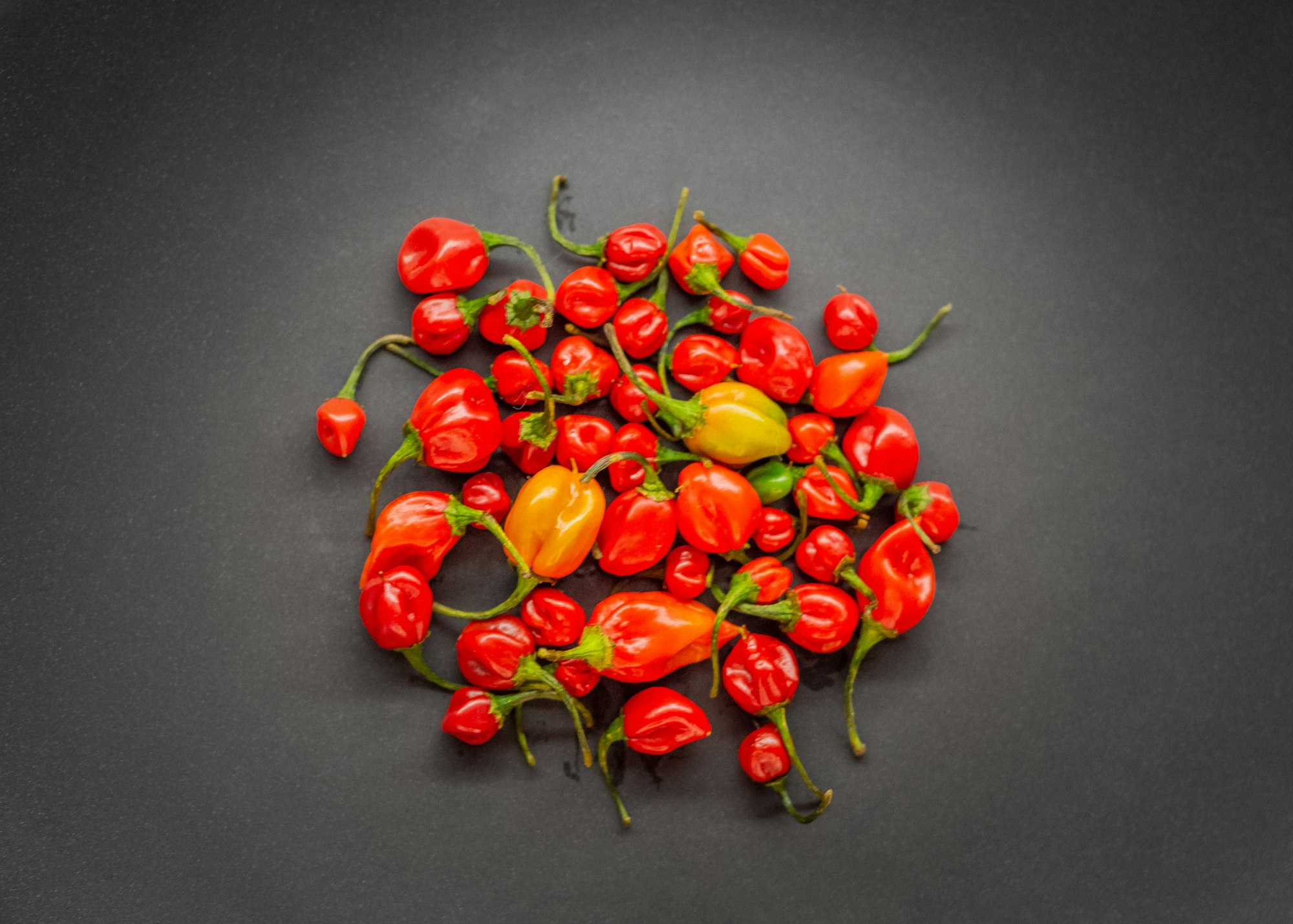Peppers are a popular ingredient in many dishes, adding flavor and spice to our meals. As dog owners, it's natural to wonder whether it's safe for our furry friends to indulge in this colorful vegetable. In this article, we will explore the topic of whether dogs can eat peppers. We will cover various types of peppers, their potential benefits, risks, and precautions to keep in mind when feeding them to your canine companion.

Dogs have different dietary needs compared to humans, and not all human foods are safe for them to consume. Peppers are known for their wide range of flavors and varying levels of spiciness. While some types of peppers can be safely enjoyed by dogs, others may pose risks to their health. Let's delve into the specifics.
Types of Peppers
Peppers come in various shapes, sizes, colors, and flavors, adding a delightful taste to our culinary experiences. When it comes to feeding peppers to dogs, it's critical to understand the different types and their characteristics. Let's explore some common types of peppers that you might encounter:
Bell Peppers: Bell peppers are mild and come in different colors, including green, red, yellow, and orange. They have a crisp texture and a slightly sweet taste. Bell peppers are safe for dogs to eat and can provide nutritional benefits.
Jalapenos: Jalapenos are medium-sized peppers known for their spicy heat. These peppers contain a compound called capsaicin, which can cause digestive upset in dogs. It is best to avoid feeding jalapenos to your canine companion.
Serrano Peppers: Serrano peppers are small and green, with a higher level of spiciness compared to bell peppers. They contain capsaicin and can irritate a dog's digestive system. It's advisable to keep serrano peppers away from your dog's diet.
Chili Peppers: Chili peppers come in various shapes and sizes, and they can range from mild to extremely hot. These peppers contain capsaicin and can cause discomfort and digestive issues in dogs. It's best to steer clear of feeding chili peppers to your furry friend.
Banana Peppers: Banana peppers are elongated and usually yellow. They have a mild to moderate level of spiciness. While they are not typically toxic to dogs, it's significant to introduce them in small amounts and observe your dog's reaction.
Habanero Peppers: Habanero peppers are among the hottest peppers available. They have a distinctive fruity flavor and pack a significant amount of heat. Due to their high capsaicin content, it is best to avoid giving habanero peppers to dogs.

Remember, each dog may have a different level of tolerance to spicy foods, so it's essential to pay attention to their reactions and consult vet if you have any concerns about specific pepper types.
Nutritional Value of Peppers
Peppers are not only tasty but also offer various nutritional benefits. They are low in calories and fat, making them a healthy addition to your dog's diet. Here are some key nutrients found in peppers:
Vitamins: Peppers, especially brightly colored ones like red and yellow bell peppers, are rich in vitamins A and C. These vitamins contribute to your dog's immune system, skin health, and vision.
Antioxidants: Peppers contain antioxidants such as beta-carotene and lycopene. These compounds help combat free radicals in the body, promoting overall health and reducing the risk of chronic diseases.
Fiber: Peppers are a good source of dietary fiber, which aids in digestion and promotes bowel regularity. Fiber can also help your dog feel fuller for longer, which can be beneficial for weight management.
Hydration: Peppers have a high water content, which can contribute to your dog's hydration. Staying properly hydrated is required for overall health and maintaining optimal bodily functions.
While peppers can offer nutritional benefits, it's crucial to consider your dog's individual needs, any underlying health conditions, and potential sensitivities when introducing them to their diet.

Benefits of Peppers for Dogs
When fed in moderation and prepared appropriately, certain types of peppers can provide some benefits to dogs. Here are a few potential advantages:
Nutritional Boost: Peppers, especially bell peppers, are a great source of vitamins and antioxidants. Adding them to your dog's diet can contribute to their overall well-being and support their immune system.
Hydration Support: Due to their high water content, peppers can help keep your dog hydrated, especially during hot weather or after physical activity.
Texture and Taste: Some dogs enjoy the crunchy texture and mild taste of bell peppers. Adding small pieces of bell peppers as a treat or mixing them into their food can provide a flavorful experience.
Remember to introduce peppers gradually and in small amounts, observing your dog's reaction. If you notice any signs of digestive upset or discomfort, it's best to discontinue feeding peppers and consult with your veterinarian.
Potential Risks and Precautions
While certain types of peppers can be safe for dogs to consume in moderation, there are potential risks and precautions to consider. Here are some necessary points to keep in mind:
Spiciness: Peppers like jalapenos, serranos, and chili peppers contain a compound called capsaicin, which gives them their spiciness. This compound can irritate a dog's digestive system and cause discomfort. It's best to avoid feeding spicy peppers to your furry friend.
Digestive Upset: Some dogs may have a sensitive stomach or digestive system, and even mild peppers like bell peppers can cause digestive upset. Signs of digestive issues can include vomiting, diarrhea, or excessive gas. If you notice any of these symptoms, it's advisable to discontinue feeding peppers and consult with your veterinarian.
Allergic Reactions: While rare, dogs can develop allergies to certain foods, including peppers. Watch for signs of an allergic reaction, such as itching, hives, swelling, or difficulty breathing, after your dog consumes peppers. If you suspect an allergic reaction, seek veterinary attention immediately.
Preparation: Before feeding peppers to your dog, it's typical to prepare them properly. Remove the stem, seeds, and membranes, as these parts can be difficult to digest and may cause stomach upset. Wash the peppers thoroughly to remove any potential pesticides or contaminants.
Moderation: As with any new food, it's crucial to introduce peppers gradually and in small amounts. Start by offering a small piece or a few finely chopped pieces mixed with your dog's regular food. Monitor their reaction and adjust the quantity accordingly.
Preparing Peppers for Dogs
When preparing peppers for your dog, follow these steps:
1. Wash the peppers thoroughly under running water to remove any dirt, pesticides, or contaminants.
2. Remove the stem, seeds, and membranes. These parts can be challenging for dogs to digest and may cause stomach upset.
3. Cut the pepper into small, bite-sized pieces or finely chop it, depending on your dog's preference and chewing ability.
4. If you're cooking the peppers, avoid adding any seasonings, oils, or spices that may be harmful to dogs. Stick to plain, unseasoned peppers.
Remember, it's required to choose the right type of pepper that is safe for your dog and prepare it appropriately to minimize any potential risks.
Introducing Peppers to Your Dog's Diet
When introducing peppers to your dog's diet, follow these guidelines:
Start with small amounts: Begin by offering a tiny piece or a small amount of finely chopped pepper mixed with your dog's regular food. This allows you to gauge their tolerance and monitor their reaction.
Observe for any adverse effects: After your dog consumes peppers, keep an eye out for any signs of discomfort, digestive upset, or allergic reactions. If you notice any negative symptoms, discontinue feeding peppers and consult with your veterinarian.
Gradually increase the quantity: If your dog tolerates peppers well and shows no signs of adverse effects, you can gradually increase the amount over time. However, always practice moderation and consider peppers as an occasional treat rather than a staple food.
Consider individual preferences: Every dog is unique, and their taste preferences may vary. Some good family dogs may enjoy the taste and texture of peppers, while others may not show interest. Respect your dog's preferences and don't force them to consume peppers if they don't enjoy them.
By following these precautions and introducing peppers in a controlled manner, you can minimize potential risks and ensure a positive experience for your furry companion. As always, easing fear at the vet if you have any concerns or questions about feeding peppers to your dog.
Monitoring Your Dog's Reaction
When you introduce peppers to your dog's diet, it's essential to closely monitor their reaction. Here are some key points to consider:

Digestive Health: After your dog consumes peppers, observe their digestive health. Watch for any signs of vomiting, diarrhea, or unusual changes in bowel movements. These can be indicators of digestive upset or intolerance to peppers.
Behavior and Energy Levels: Pay attention to your dog's overall behavior and energy levels. If they seem lethargic, have a loss of appetite, or display any unusual behavior after consuming peppers, it's significant to take note and consult with your veterinarian if necessary.
Allergic Reactions: While rare, dogs can develop allergic reactions to certain foods, including peppers. Look for signs of itching, redness, swelling, or hives on your dog's skin. If you notice any of these symptoms, seek veterinary attention promptly.
Oral Discomfort: Peppers, especially spicy varieties, can cause oral discomfort in dogs. Excessive drooling, pawing at the mouth, or discomfort while eating may indicate that the peppers are irritating. If you observe these signs, discontinue feeding peppers and consult with your veterinarian.
Remember, every dog is unique, and their reactions to new foods can vary. It's crucial to be attentive to any changes or adverse effects and adjust their diet accordingly. If you have any concerns or questions, don't hesitate to seek guidance from your veterinarian.
Alternatives to Peppers for Dogs
If you're unsure about feeding peppers to your dog or if your dog doesn't seem to enjoy them, there are alternative vegetables you can offer. These alternatives can provide similar benefits and nutritional value without the potential risks associated with peppers. Here are some safe and healthy alternatives:
Carrots: Carrots are a popular vegetable snack for dogs. They are crunchy, low in calories, and rich in vitamins, such as vitamin A and beta-carotene. Carrots can be served raw or cooked, and many dogs enjoy the natural sweetness and satisfying crunch.
Cucumbers: Cucumbers are hydrating and refreshing for dogs. They are low in calories, high in water content, and can provide a cooling sensation. Slice cucumbers into small pieces and offer them as a snack or mix them into your dog's meals.
Green Beans: Green beans are a nutritious and fiber-rich option for dogs. They are low in calories and contain vitamins and minerals, such as vitamin K and manganese. You can serve green beans steamed, boiled, or as a raw snack.
Sweet Potatoes: Cooked and mashed sweet potatoes can be a healthy addition to your dog's diet. They are a good source of dietary fiber, vitamins A and C, and antioxidants. Avoid adding any seasonings or spices when preparing sweet potatoes for your dog.
Zucchini: Zucchini is a mild and hydrating vegetable that dogs can enjoy. It is low in calories and contains vitamins and minerals, such as vitamin C and potassium. You can offer raw or cooked zucchini slices as a snack or mix them into your dog's meals.

When introducing these alternatives, remember to start with small amounts and monitor your dog's reaction. Each happy dog may have different preferences and tolerances, so it's important to find options that suit their individual needs and tastes.
Incorporating safe and suitable vegetables in your dog's diet can provide nutritional variety and contribute to their overall well-being. As always, consult with your veterinarian if you have any specific concerns or questions about your dog's dietary needs.
FAQs
Q1: Can dogs eat spicy peppers?
A: It's best to avoid feeding dogs spicy peppers like jalapenos or chili peppers, as they can cause digestive issues and discomfort.
Q2: Are bell peppers safe for dogs?
A: Yes, bell peppers are generally safe for dogs to eat. They can provide valuable nutrients and a crunchy texture.
Q3: Can dogs eat raw peppers?
A: Raw peppers should be prepared carefully for dogs. Remove the stem, seeds, and membranes before offering them as a snack.
Q4: Can dogs have an allergic reaction to peppers?
A: While rare, dogs can develop allergies to certain foods, including peppers. Monitor your dog for any signs of an allergic reaction after consumption.
Q5: How much pepper can I give my dog?
A: It's recommended to give peppers to your dog in moderation. Start with small amounts and observe how they respond before increasing the quantity.
Conclusion
In conclusion, dogs can eat certain types of peppers, such as bell peppers, in moderation. These peppers offer nutritional benefits and can be a flavorful addition to their diet. However, it's crucial to avoid feeding dogs spicy peppers like jalapenos or chili peppers, as these can cause digestive issues. Always introduce new foods gradually and monitor your dog's reaction closely.




